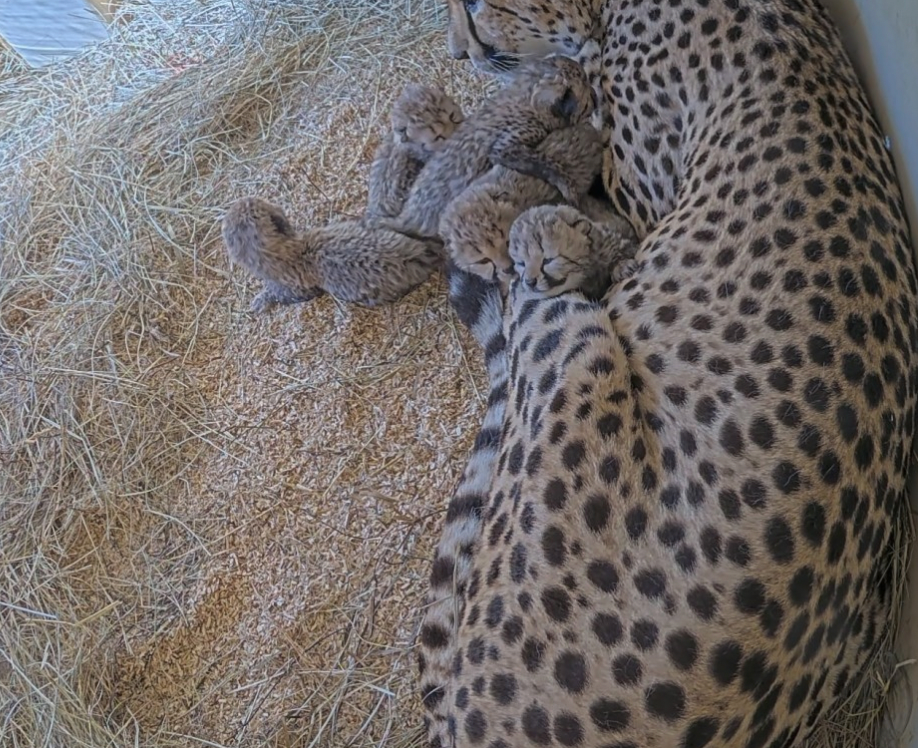Smithsonian’s National Zoo and Conservation Biology Institute (NZCBI) in Front Royal, Virginia, has welcomed a litter of 5 cheetah cubs to 8-year-old Echo on September 12, 2023. There are 3 male and 2 female cubs. One cub didn’t survive.
Fun facts about cheetahs
Here are some interesting tidbits about the world’s fastest land animal1,3:
- The live in small, isolated populations primarily in sub-Saharan Africa
- There are 5 recognized subspecies: Northwest African cheetah, East African cheetah, South African cheetah, Northeast African cheetah, and Asiatic cheetah
- Their closest relatives are cougars and jaguarundis
- They can reach up to speeds of 64 miles per hour in 3 seconds, though their endurance is not as strong
- They prefer to hunt during the day when other predators are least active
- They chirp more similar to a bird rather than roar like other big cats
- They are often confused with leopards, however while cheetahs have dark-colored curved lines between their nose and cheeks, leopards don’t have these distinct face markings
According to an organizational release,1 the staff is allowing Echo to bond with her cubs, but they are conducting brief health checks at times to ensure their development is going smoothly. The cubs appear strong, active, vocal, and eating well. Echo, who was born at White Oak Conservation in Florida in 2015, is a second-time mother as she birthed 4 cubs in 2020. The mom has been trained to voluntarily engage in ultrasounds, enabling the staff to determine she was pregnant on July 28, 2023.
There are 2 potential sires, either Asante or Flash, and scientists will perform genetic testing when the cubs are old enough to have blood collected. This information is key for population management because the cubs will ultimately enter breeding programs.
Because of human conflict, poaching, and habitat and prey-base loss, there are less than 7,000 cheetahs left in the wild and the International Union for Conservation of Nature deems them vulnerable to extinction.2
NZCBI is part of the Cheetah Breeding Center Coalition, a group of 10 cheetah breeding centers throughout the US, with the goal to develop and maintain a sustainable North American cheetah population under human care. Since 2007, NZCBI has welcomed 81 cheetah births and it currently holds 30 cheetahs.1
At the zoo, visitors can watch the cubs develop via the Cheetah Cub Cam. Echo may move her cubs out of the den and around her habitat so they may be out of view at times.
References
- Litter of five cheetah cubs are born at Front Royal Campus, Smithsonian’s National Zoo and Conservation Biology Institute. News release. Smithsonian’s National Zoo and Conservation Biology Institute. September 21, 2023. Accessed September 22, 2023. https://nationalzoo.si.edu/news/litter-five-cheetah-cubs-are-born-front-royal-campus-smithsonians-national-zoo-and-conservation
- Cheetah. International Union for Conservation of Nature.Accessed September 22, 2023. https://www.iucnredlist.org/species/219/50649567
- Top 5 facts about cheetahs. WWF. Accessed September 22, 2023. https://www.wwf.org.uk/learn/fascinating-facts/cheetah
